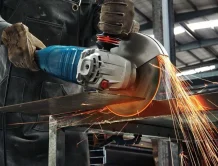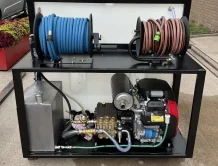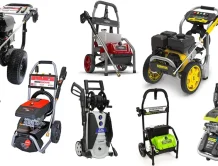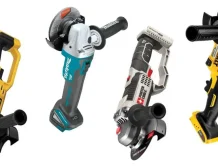It’s possible that you are among those who deal with various industrial and household pressure washers on a daily basis. And you may wonder, what are the differences between home and industrial pressure washer? In this content, we will examine the differences between household and industrial car washes.
In general, pressure washers are specialized systems used for washing various vehicles and surfaces. They can clean different parts of an object with high speed and precision while requiring a relatively reasonable amount of water and detergent. The functionality of these items is based on increasing the flow, temperature, and elements of such nature. For this purpose, water and cleaning agents are added through pre-defined inputs into the structure, and upon passing through the pump with intensity, a high-speed flow of the pressure washer is ejected. In general, car washes are divided into two categories in terms of application: household and industrial, which we will further explain below.
Industrial Pressure Washer:
This type of pressure washer is a relatively large and heavy structure classified under industrial equipment. Its main performance lies in removing a wide range of pollutants. The water ejected from this type of pressure washer has high pressure, flow, and in some cases, high temperature. As a result, it can be used in processes such as cleaning building facades, removing paint, concrete demolition, disinfection in large areas, etc.
Household Pressure Washer:
A household pressure washer consists of a small and lightweight system, which consequently limits its performance. It comes in three sizes: small, medium, and large, and can be useful for household and semi-industrial purposes. For example, you can use it to wash cars, bicycles, yards, various parts of a building, paved surfaces, tiles, ceramics, etc.
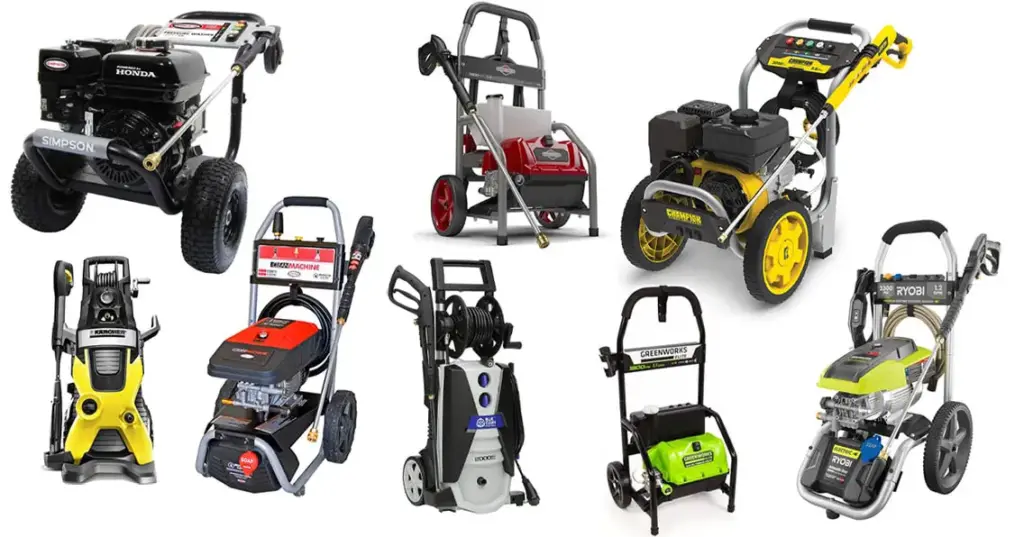
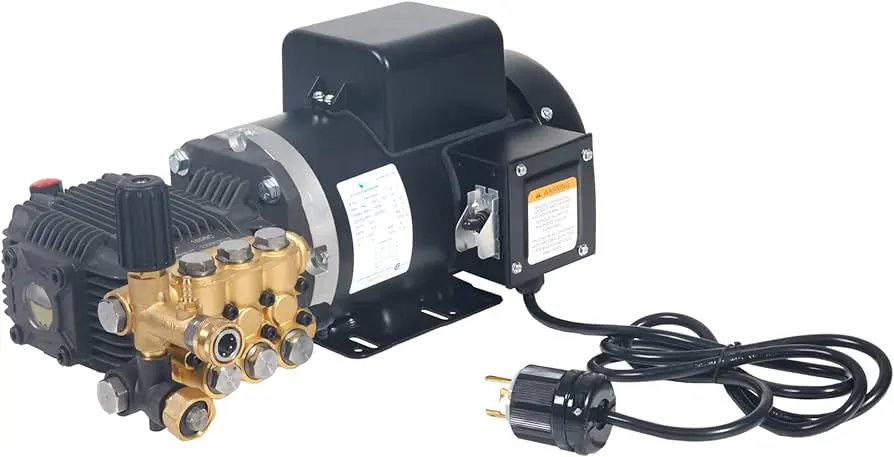
Industrial and Semi-Industrial Pressure Washer Motors
Undoubtedly, the first difference between these components, after their structural dimensions, is summarized in the technical specifications of the motor. In the first step, the power and capability that an industrial motor brings to the structure are much greater than the household type. Secondly, the components used in industrial motors are designed in a way that they can be used for long periods of washing without encountering problems. This is because the type of components in this structure is inductive, and the motor piston material is a type of moisture-resistant ceramic. In general, it can be concluded that this structure is a device with a long lifespan that can be continuously used.
In contrast, a household car wash contradicts some of these specifications. The applied power from the motor of this device is lower, and the sudden entry of hot water into its system can cause problems. Additionally, this product is not designed for continuous use and has a limited lifespan. Nevertheless, despite its small size, the structure can be transported and moved around, and individuals can purchase it at a relatively low cost.
Performance of Various Pressure Washer Pumps
One of the differences between household and industrial pressure washers is in their pumps. In general, the pumps used in various pressure washers are classified into three groups: industrial, semi-industrial, and household. Industrial items are generally three-phase or single-phase, and their difference lies in the intensity of electrical load and the power of their motor. In contrast, semi-industrial pumps can pump water with high intensity and pressure using a relatively powerful pump, making them useful for uses beyond household applications. Finally, household pumps remain, requiring less water compared to other pumps and expelling it with a limited flow and pressure.
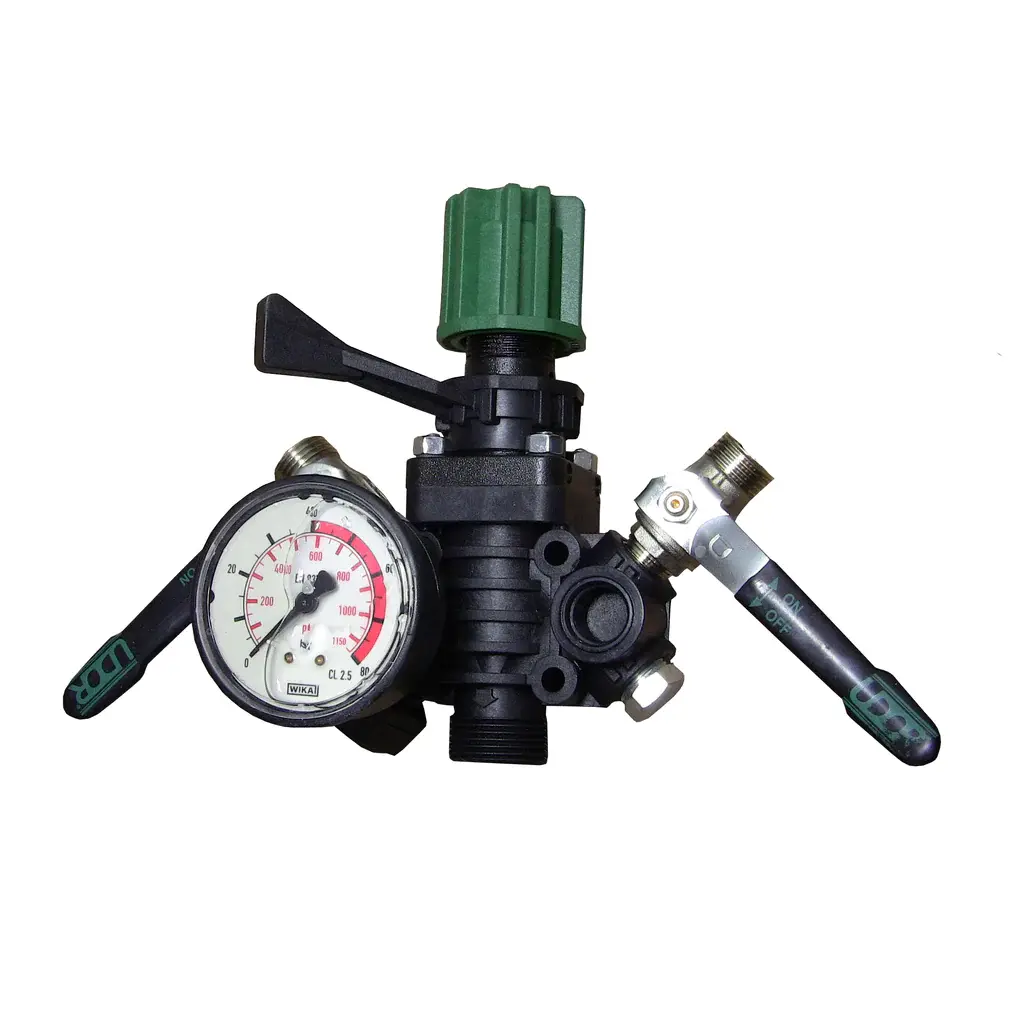
Pressure Adjustment in Industrial and Household Pressure Washers
After a careful analysis, it is evident that the flow rate in industrial car washes is relatively low. Flow rate refers to the amount of water that exits the system during a specific period. These devices can expel between 5 to 7 liters of water, depending on the applied pressure. For industrial models, this figure increases to 12 to 20 liters per minute.
The motor speed used in industrial devices is less than 1400 revolutions per minute (RPM). However, these components have high power, contributing to their extended lifespan. It is worth mentioning that the presence of a pressure gauge also differs between industrial and household categories. This component can control the applied pressure on the structure. The higher the motor power, the higher the pressure it can generate.
The pressure applied to household and semi-industrial structures is often not real and is created through rotating nozzles. Industrial pressure washers also allow the use of two nozzles simultaneously, a feature not present in the household models.
Hose in Industrial and Household Pressure Washers
Another point in the list of differences between household and industrial pressure washers is the type of hose. The internal material of the hose in industrial pressure washers is made of a type of steel that allows the passage of a large volume of water under high pressure. In contrast, household hoses lack a steel covering and are only of the high-pressure passing type.
Weight of Industrial and Household Pressure Washers
Differences between household and industrial pressure washers also include details such as dimensions and weight. Household pressure washers have a slim and relatively lightweight body. On the other hand, industrial pressure washers have a robust body that not only enhances structural durability but also increases their weight. It is noteworthy that the difference between household and industrial pressure washers does not end here. The household version weighs only 5 kilograms, making it easy to carry and move around. In contrast, the industrial type, with its 20-kilogram weight, is challenging to transport from one point to another.



